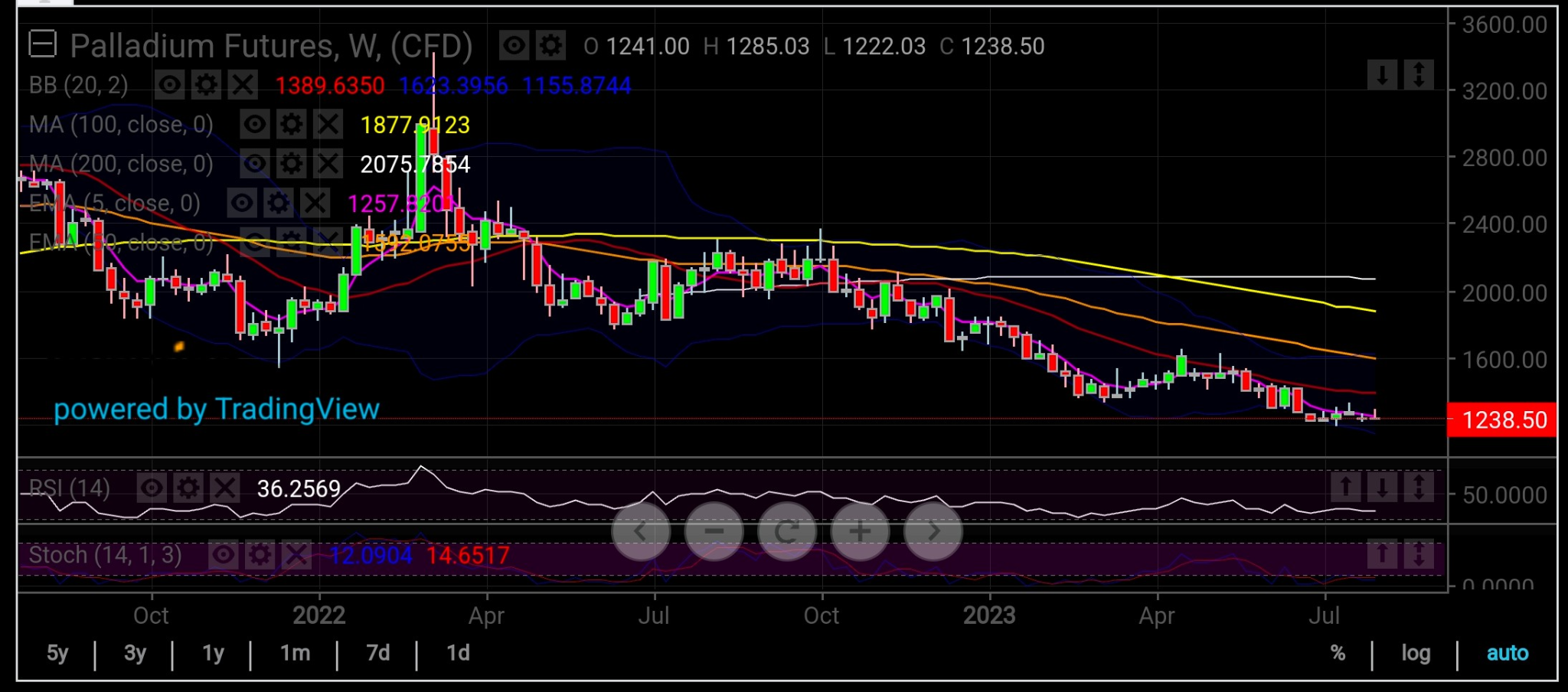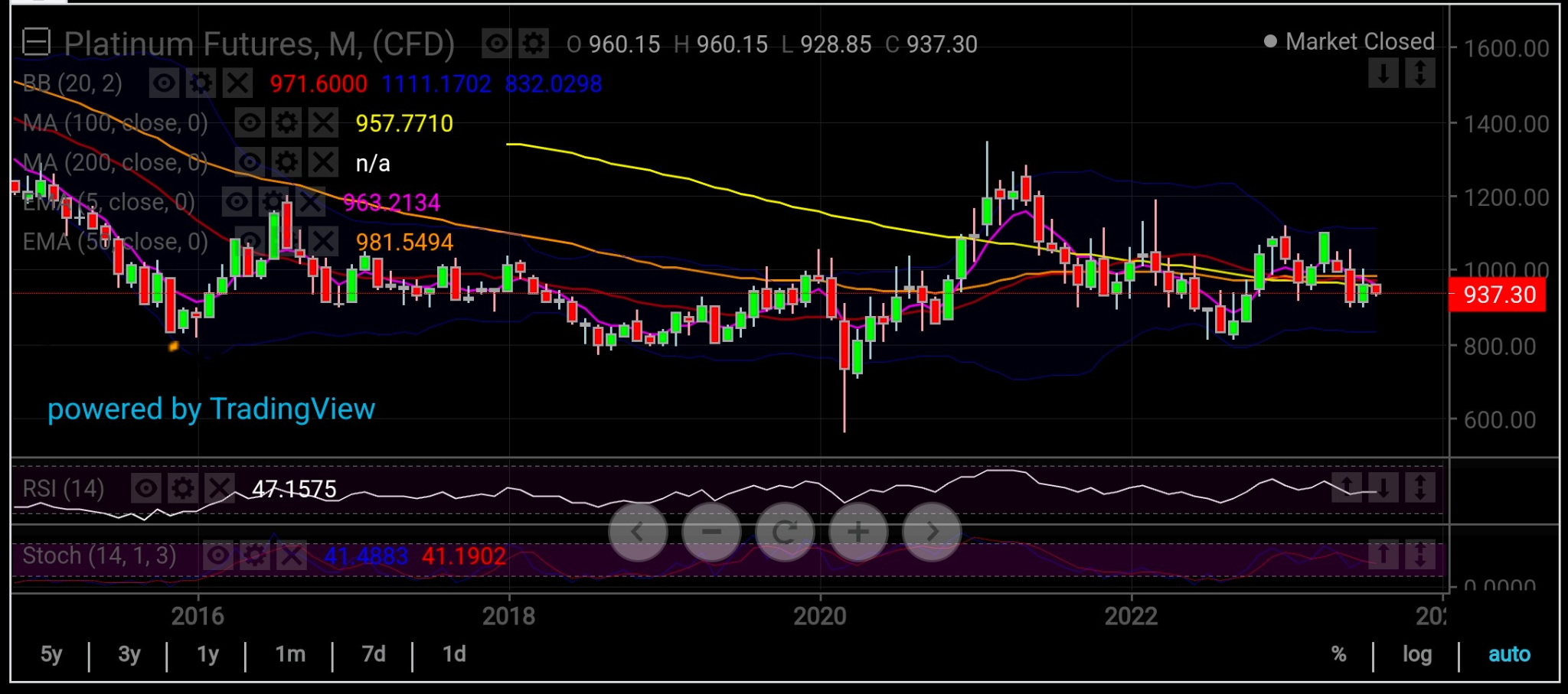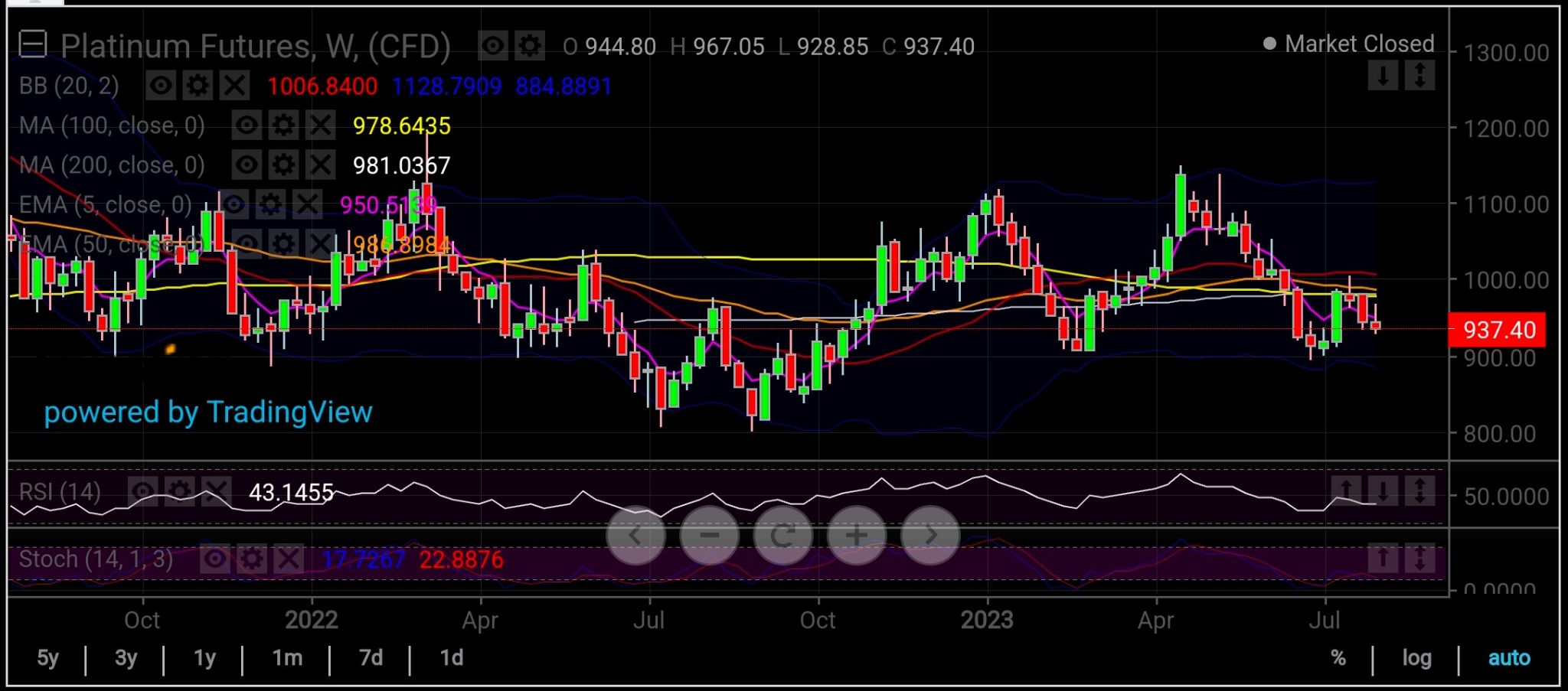- Weakened auto outlook has weighed on PGMs this year, particularly palladium
- Since May, platinum and palladium have moved same way on dollar rebound
- To rebound, palladium has to cross first resistance at $1,324; platinum at $973
A lack of specific industrial demand has tied the direction for and , with the two auto-catalyst metals also mimicking ’s gains and losses as the ’s rebound drives all three lower.
Since May, platinum and palladium futures on New York’s Comex have gone the same way directionally in monthly performance.
Platinum slid 18% for May and June combined. It then rebounded by about 5% in July. With just a session in for August, it shows a 2% loss for this month.
Palladium dropped almost 20% in the May-June stretch. Last month, it rose more than 4%. With August having started, it is down nearly 3%.
Gold was up 4% in July as well and is more than 1% lower for August as the dollar continues to advance from July’s 15-month lows.
“The previous month’s bullish momentum in platinum and palladium was a reaction to dollar weakness, and now, the dollar’s rebound seems to cause some weakness in the two metals,” Sunil Kumar Dixit, chief technical strategist at SKCharting.com, said. He adds:
“We expect some more strength in the dollar, which may cause further drops in the two so-called PGMs or platinum group metals.”
Year-to-date though, the PGMs remain far apart. Platinum, a key purifier of exhaust fumes that sits in the catalytic converter of diesel-powered cars, is down 14% for the year. Palladium, which performs the same discharge purification function for gasoline-powered engines, is down a whopping 32% on the year.
Context
This year’s swings in the dollar, which has moved more to the upside than down, have sparked undue volatility in some commodities, including these two PGMs.
Of the two auto catalyst metals, palladium is more valued than platinum for its use in gasoline-powered cars, which dominate the global automobile market.
But a dampened global economic outlook caused by growth troubles in China and lingering worries about whether the West — particularly Europe more than the U.S. — would escape a recession have weighed heavily on the auto market and palladium.
Palladium hit a record high of $3,440.76 an ounce in New York futures trade in March 2022. That rally came after major producer Russia invaded Ukraine and disrupted the flow of not just palladium but other key commodities as well as Western government responded with heavy sanctions against Moscow.
At Wednesday’s pre-open in New York, the most-active palladium for September delivery on New York’s Comex hovered at $1,223 an ounce. It finished last year at $1,806.70.
Platinum was at just under $933 at the time of writing. It finished 2022 at $1,086.
PGMs Outlook

Charts by SKCharting.com, with data powered by Investing.com
The broader picture remains fragile, and the monthly chart shows consolidated price action guarded by the 100-month Simple Moving Average, or SMA, of $1,455 acting as resistance and the 200-month SMA of $1008 serving as support, said SKCharting’s Dixit.

Immediate resistance is seen at the 5-month Exponential Moving Average, or EMA, of $1,324, followed by the weekly Middle Bollinger Band of $1,390.
“Clearing through $1,390 will open the way for the next leg higher of the 100-month SMA of $1,455, followed by the 50-week EMA of $1,590,” Dixit said, adding:
“A break below $1,187 will extend the downside to the 200-month SMA of $1,008.”

The broader outlook shows consolidated price action below the 5-month EMA of $963, which keeps the previous month’s bullish rebound under check, while the 100-month SMA of 957 poses an immediate challenge that needs to be cleared in order for a resumption of the uptrend.

“Short-term perspective has some possibility of a rebound towards the 50-day EMA of $973, clearing through the zone,” said Dixit. “That will eventually extend the upward move towards the confluence of the 200-day SMA of 1006 and the 100-day SMA of $1,009.”
“But a break below the major support of $894 will invalidate the rebound.”
***
Disclaimer: The content of this article is purely to educate and inform and does not in any way represent an inducement or recommendation to buy or sell any commodity or its related securities. The author Barani Krishnan does not hold a position in the commodities and securities he writes about. He typically uses a range of views outside his own to bring diversity to his analysis of any market. For neutrality, he sometimes presents contrarian views and market variables.
คำแนะนำการอ่านบทความนี้ : บางบทความในเว็บไซต์ ใช้ระบบแปลภาษาอัตโนมัติ คำศัพท์เฉพาะบางคำอาจจะทำให้ไม่เข้าใจ สามารถเปลี่ยนภาษาเว็บไซต์เป็นภาษาอังกฤษ หรือปรับเปลี่ยนภาษาในการใช้งานเว็บไซต์ได้ตามที่ถนัด บทความของเรารองรับการใช้งานได้หลากหลายภาษา หากใช้ระบบแปลภาษาที่เว็บไซต์ยังไม่เข้าใจ สามารถศึกษาเพิ่มเติมโดยคลิกลิ้งค์ที่มาของบทความนี้ตามลิ้งค์ที่อยู่ด้านล่างนี้
Source link





